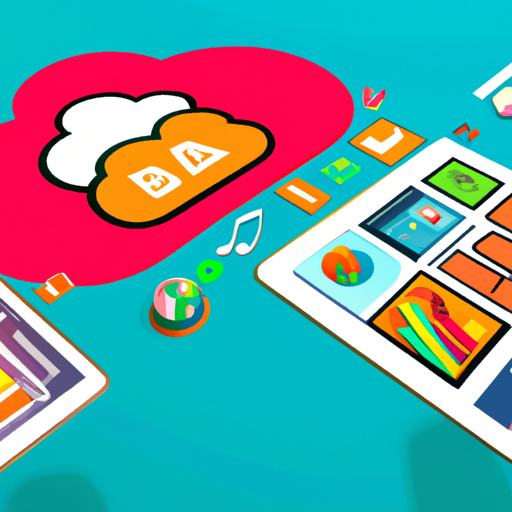
Understanding the Importance of Futureproofing Distribution
In today’s rapidly changing business landscape, it is crucial for companies to futureproof their distribution strategies. With advancements in technology, evolving customer expectations, and global market dynamics, distribution has become increasingly complex. To stay ahead of the competition and ensure long-term success, businesses must understand the importance of futureproofing their distribution processes.
Futureproofing distribution refers to the proactive measures taken by companies to adapt and thrive in an ever-changing marketplace. It involves anticipating future challenges and trends, and implementing strategies that can withstand these complexities. By futureproofing their distribution, companies can minimize risks, optimize operations, and maintain a competitive edge.
One of the key reasons why futureproofing distribution is important is the rapid pace of technological advancements. Technology has revolutionized the way businesses operate, and distribution is no exception. From automated warehouses to advanced inventory management systems, technology has made distribution more efficient and streamlined. However, it has also introduced new complexities.
To navigate these complexities, companies must embrace technology and leverage it to their advantage. This could involve investing in state-of-the-art distribution software, adopting automation and robotics, or implementing data analytics tools. By staying up-to-date with the latest technological trends and incorporating them into their distribution processes, companies can futureproof their operations and stay ahead of the curve.
Another factor that makes futureproofing distribution crucial is the changing customer expectations. Today’s customers demand fast, reliable, and personalized service. They expect their orders to be delivered quickly, and they want real-time updates on their shipments. Meeting these expectations requires companies to have a flexible and agile distribution network.
To futureproof their distribution, companies should invest in a robust logistics infrastructure that can handle the demands of modern customers. This could involve partnering with reliable logistics providers, optimizing transportation routes, or implementing last-mile delivery solutions. By prioritizing customer satisfaction and adapting their distribution processes accordingly, companies can futureproof their operations and build strong customer relationships.
Global market dynamics also play a significant role in the importance of futureproofing distribution. With the rise of e-commerce and globalization, businesses are increasingly operating on a global scale. This presents both opportunities and challenges for distribution.
To navigate the complexities of global distribution, companies must have a deep understanding of international regulations, customs procedures, and cultural differences. They should also have a network of reliable partners and suppliers in different regions. By investing in global distribution capabilities and building strong relationships with international partners, companies can futureproof their operations and expand their reach.
In conclusion, futureproofing distribution is essential for companies to thrive in today’s complex business environment. By embracing technology, meeting customer expectations, and adapting to global market dynamics, companies can ensure that their distribution processes remain efficient, reliable, and competitive. By taking proactive measures to futureproof their distribution, companies can position themselves for long-term success and stay ahead of the competition.
Key Strategies for Navigating Complexities in Distribution

The world of distribution is constantly evolving, with new technologies, changing consumer demands, and global market shifts. In order to stay ahead of the game and futureproof your distribution strategy, it’s important to navigate the complexities that come with it. Here are five key strategies to help you do just that.
First and foremost, it’s crucial to have a deep understanding of your target market. This means not only knowing who your customers are, but also understanding their preferences, behaviors, and purchasing habits. By gathering and analyzing data, you can gain valuable insights that will inform your distribution decisions. For example, if you discover that a significant portion of your target market prefers to shop online, you can invest in e-commerce platforms and digital marketing to reach them more effectively.
Another important strategy is to build strong relationships with your suppliers and partners. In the world of distribution, collaboration is key. By working closely with your suppliers, you can ensure a steady supply of products and reduce the risk of disruptions. Additionally, by fostering strong partnerships with other distributors or retailers, you can tap into new markets and expand your reach. This can be done through joint marketing efforts, co-branding initiatives, or even sharing resources and expertise.
In today’s fast-paced world, agility is a must. The ability to quickly adapt to changing circumstances and seize new opportunities is what sets successful distributors apart. This means being open to new technologies and embracing innovation. For example, investing in automation and robotics can help streamline your distribution processes and improve efficiency. Similarly, adopting cloud-based software solutions can provide real-time visibility into your supply chain, enabling you to make data-driven decisions and respond to market demands faster.
Furthermore, it’s important to stay up-to-date with industry trends and regulations. The distribution landscape is constantly evolving, and it’s crucial to stay ahead of the curve. This means keeping an eye on emerging technologies, such as blockchain or artificial intelligence, that have the potential to disrupt the industry. It also means staying informed about changing regulations and compliance requirements, both domestically and internationally. By staying informed and proactive, you can ensure that your distribution strategy remains compliant and competitive.
Last but not least, investing in talent and training is essential for futureproofing your distribution strategy. The success of any distribution operation relies heavily on the skills and expertise of its workforce. By investing in training programs and professional development opportunities, you can equip your employees with the knowledge and tools they need to excel in their roles. Additionally, attracting and retaining top talent is crucial. By creating a positive work environment, offering competitive compensation packages, and providing opportunities for growth, you can build a strong and motivated team that will drive your distribution strategy forward.
In conclusion, futureproofing your distribution strategy requires a combination of market understanding, collaboration, agility, industry knowledge, and talent investment. By implementing these key strategies, you can navigate the complexities of distribution and position your business for long-term success. Remember, the world of distribution is constantly evolving, and it’s up to you to stay ahead of the game.
Five Tips to Successfully Futureproof Your Distribution Process
The distribution process is a critical aspect of any business. It involves getting products from the manufacturer to the end consumer efficiently and effectively. However, with the ever-changing landscape of technology and consumer demands, it can be challenging to futureproof your distribution process. In this article, we will provide you with five tips to successfully navigate the complexities and ensure your distribution process is futureproof.
Firstly, it is essential to embrace technology. Technology has revolutionized the way businesses operate, and the distribution process is no exception. By leveraging technology, you can streamline your operations, improve efficiency, and stay ahead of the competition. For example, implementing a robust inventory management system can help you track and manage your inventory in real-time, reducing the risk of stockouts or overstocking. Additionally, investing in automation technologies, such as robotics or artificial intelligence, can help you optimize your warehouse operations and reduce human error.
Secondly, staying agile is crucial in futureproofing your distribution process. The business landscape is constantly evolving, and consumer demands can change rapidly. To adapt to these changes, it is essential to have a flexible and agile distribution process. This means being able to quickly adjust your operations to meet changing customer needs or market trends. For instance, having a network of multiple distribution centers strategically located can help you respond to regional demands more efficiently. Additionally, implementing a just-in-time inventory management approach can help you minimize inventory holding costs while ensuring you have enough stock to meet customer demands.
Thirdly, collaboration is key in futureproofing your distribution process. In today’s interconnected world, collaboration with suppliers, partners, and even competitors can bring significant benefits. By working together, you can share resources, knowledge, and expertise, ultimately improving the efficiency and effectiveness of your distribution process. For example, forming strategic partnerships with logistics providers can help you optimize your transportation routes and reduce costs. Collaborating with suppliers can also help you gain insights into upcoming trends or changes in the market, allowing you to adjust your distribution strategy accordingly.
Fourthly, investing in talent and training is essential for futureproofing your distribution process. As technology continues to advance, the skills required in the distribution industry are also evolving. It is crucial to invest in training your employees and equipping them with the necessary skills to adapt to these changes. For example, providing training on data analytics can help your team make informed decisions based on real-time data. Additionally, fostering a culture of continuous learning and innovation can help your employees stay ahead of the curve and drive improvements in your distribution process.
Lastly, monitoring and analyzing data is vital in futureproofing your distribution process. Data is a valuable asset that can provide insights into your operations, customer behavior, and market trends. By collecting and analyzing data, you can identify areas for improvement, optimize your processes, and make data-driven decisions. For example, analyzing customer data can help you identify patterns or preferences, allowing you to tailor your distribution strategy to meet their needs better. Additionally, monitoring key performance indicators (KPIs) can help you track the effectiveness of your distribution process and identify areas that require attention or improvement.
In conclusion, futureproofing your distribution process is essential to stay competitive in today’s rapidly changing business landscape. By embracing technology, staying agile, collaborating, investing in talent and training, and monitoring data, you can navigate the complexities and ensure your distribution process is ready for the future. Remember, the key is to continuously adapt and innovate to meet the evolving needs of your customers and the market.


